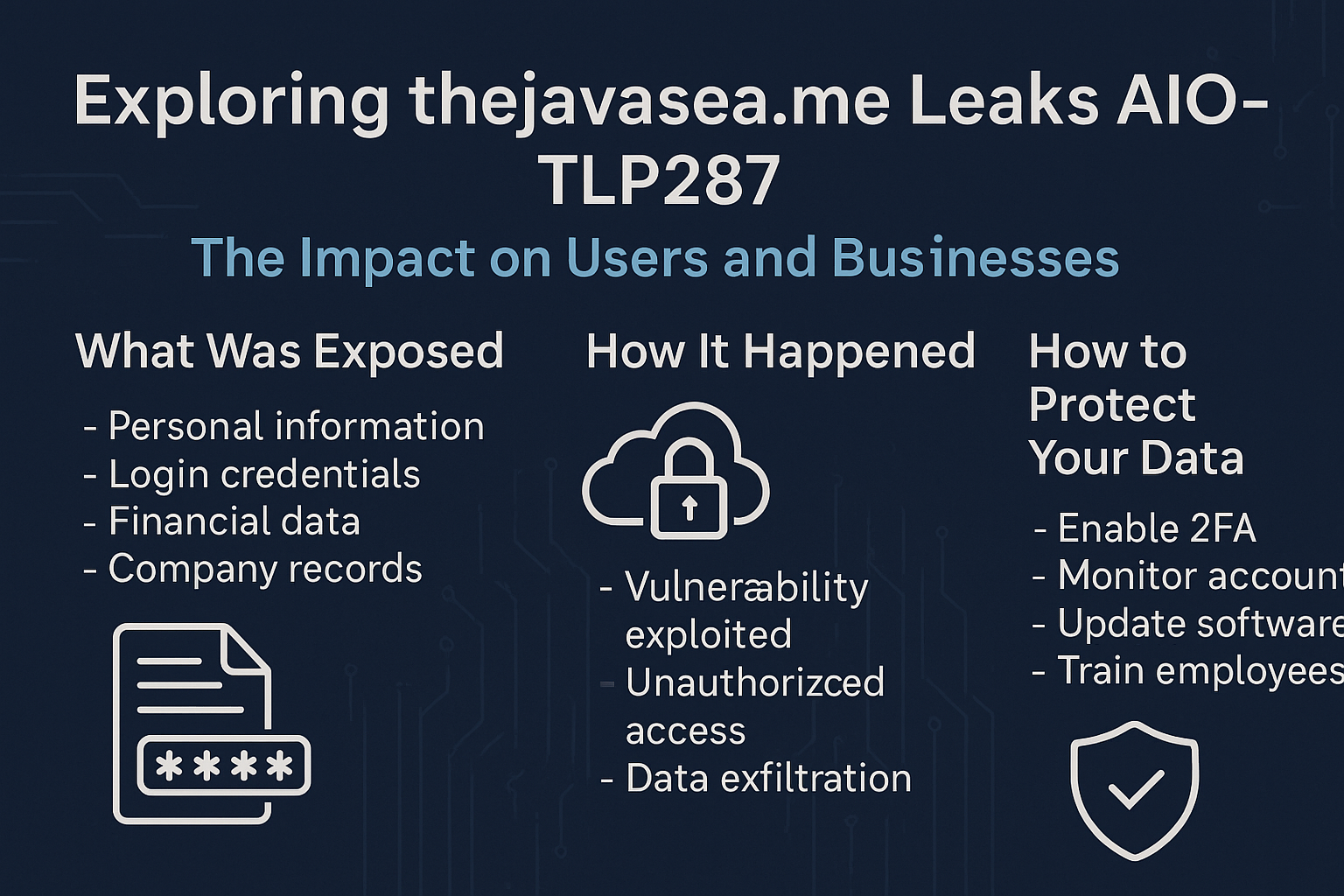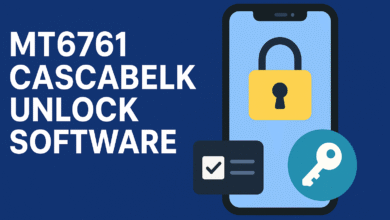Inside thejavasea.me Leaks AIO-TLP287: What You Must Know

In today’s digital-first world, online users entrust their most sensitive data to browsers and online platforms. However, with the rise of cyber threats, incidents like thejavasea.me leaks AIO-TLP287 have raised alarms within the cybersecurity community. This particular breach has reportedly compromised data from up to 50 million users, making it one of the most significant leaks in recent history.
In this article, we explore the ins and outs of thejavasea.me leaks AIO-TLP287, including what was leaked, how it happened, what it means for individuals and businesses, and how to protect against similar threats in the future.
What Is thejavasea.me?
Thejavasea.me is a lesser-known yet controversial website that has gained notoriety for hosting highly sensitive information. From login credentials and corporate data to proprietary tools and internal communications, the platform has long been viewed as a digital grey zone.
Operating in secrecy with anonymous administrators, thejavasea.me is reportedly linked to the dark web. It has become a go-to repository for leaked data, which is why cybersecurity experts and legal bodies have increasingly focused on its activities. Despite scrutiny, the site continues to function as a hub for leaked materials, making it an ongoing concern for digital privacy.
Understanding AIO-TLP287
To grasp the severity of thejavasea.me leaks AIO-TLP287, it’s important to break down the terminology:
-
AIO stands for “All-In-One,” indicating a compilation of various datasets.
-
TLP refers to the “Traffic Light Protocol,” a cybersecurity labeling system used to denote the sensitivity of information.
-
287 represents the batch or unique identifier of this specific data leak.
Together, the term thejavasea.me leaks AIO-TLP287 represents a massive, structured release of confidential information affecting tens of millions of users worldwide.
What Was Included in thejavasea.me Leaks AIO-TLP287?
Several categories of information were reportedly exposed in thejavasea.me leaks AIO-TLP287, including:
-
Login Credentials: Usernames, email addresses, passwords, and even two-factor authentication (2FA) data were leaked, making personal and business accounts vulnerable to hacking attempts.
-
Corporate Information: Internal memos, employee details, ownership records, and confidential project files from various organizations were exposed. This information can be exploited for phishing schemes and corporate espionage.
-
Personal Details: Names, home and mailing addresses, phone numbers, and financial records such as transactions and bank details were leaked. This opens the door to identity theft and fraud.
-
Software and Development Data: This includes proprietary source code, internal systems, scripts, and restricted documents that are essential to a company’s operational security.
Consequences of thejavasea.me Leaks AIO-TLP287
The implications of thejavasea.me leaks AIO-TLP287 are wide-ranging and alarming:
1. Corporate Damage
The exposure of confidential company data can lead to:
-
Financial fraud
-
Legal penalties for non-compliance with data protection laws
-
Loss of customer trust
-
Intellectual property theft
In worst-case scenarios, these leaks can disrupt company operations and even cause reputational collapse.
2. Privacy Violations
Individual users are at risk of:
-
Identity theft
-
Blackmail using financial or personal information
-
Emotional distress
-
Unauthorized access to accounts and digital services
This raises ethical questions about digital data storage and the responsibilities of platforms handling such information.
3. Legal and Ethical Dilemmas
Leaks such as thejavasea.me leaks AIO-TLP287 underline the need for stricter data governance laws. Regulatory bodies may enforce new legislation to ensure data handlers implement stronger security measures, including timely patching, encryption, and better authentication protocols.
How Did the Leak Happen?
Although the exact breach method hasn’t been officially confirmed, cybersecurity experts suggest a few likely techniques:
-
Social Engineering: Attackers may have manipulated individuals into revealing credentials unknowingly.
-
Exploitation of Vulnerabilities: Unpatched systems and poorly secured servers are frequent targets for hackers.
-
Phishing Attacks: Fake emails trick users into inputting sensitive information.
-
Insider Threats: Disgruntled employees or contractors may have willingly leaked data for monetary or ideological reasons.
These tactics are all too common in large-scale data breaches, and organizations must remain vigilant against them.
How to Protect Against Data Breaches Like AIO-TLP287
Here are practical strategies individuals and businesses can implement to mitigate the risk of future leaks:
-
Regular Security Audits
Performing frequent audits helps detect and fix vulnerabilities before they are exploited. -
Data Encryption
Encrypting data ensures that even if a breach occurs, the information is unusable without a decryption key. -
Strict Access Controls
Limiting data access to only those who need it can prevent unnecessary exposure. -
Employee Cybersecurity Training
Staff should be regularly educated on how to identify phishing, protect credentials, and respond to suspicious activity. -
Use of Threat Intelligence Tools
Cybersecurity tools can monitor activity, detect anomalies, and notify teams of any intrusion attempts.
Frequently Asked Questions (FAQs)
Q1: What exactly is thejavasea.me leaks AIO-TLP287?
A: It refers to a massive data leak from the javasea.me platform, involving a batch labeled AIO-TLP287 that reportedly exposed up to 50 million users’ data.
Q2: How can I check if my data was part of the leak?
A: Use reputable breach detection platforms like “Have I Been Pwned” or consult cybersecurity experts for a deep check.
Q3: Is the data still available online?
A: While some data may have been removed or hidden, elements of the leak might still circulate on underground forums or the dark web.
Q4: What legal consequences could arise from this leak?
A: Affected companies could face lawsuits, regulatory fines, and reputational damage if found non-compliant with data protection laws.
Q5: What’s the first thing to do if I suspect my data was leaked?
A: Immediately update all your passwords, enable 2FA, notify affected platforms, and monitor financial or login activity for unusual behavior.
Conclusion
The thejavasea.me leaks AIO-TLP287 incident is a sobering reminder of how fragile our digital privacy can be. Whether you’re an individual or part of a large organization, the leak signals an urgent need for advanced cybersecurity practices. From encryption and employee training to regular audits, protecting data is now more critical than ever. Staying informed and prepared is the first defense against the next potential data breach.



